Make EDC Happen: Wheelchair Users With a Will Find A Way
Eve Flanigan 03.26.21
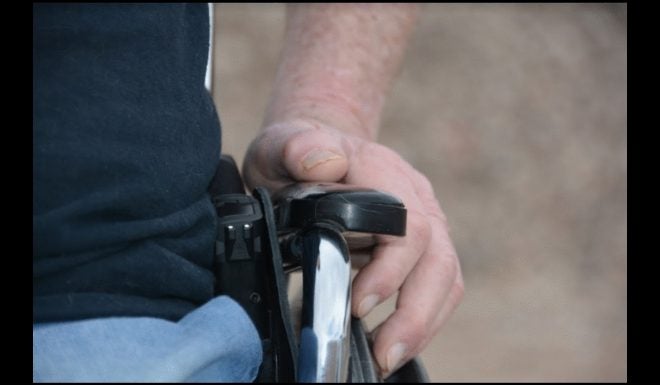
One of my greatest challenges as a concealed carry instructor is to inspire the practice of everyday carry with emphasis on that “every day” bit. A large portion of returning students say they only carry on special occasions – most often when traveling out of town as if crimes don’t happen in our hometown. Sadly, their likelihood of success in drawing and effective use of a concealed handgun is diminished through lack of habitual use.
There is a small, but important segment of my clientele who represent a refreshing change from this pattern. These are the four locals I know who are licensed to carry concealed and also use a wheelchair daily. One decided to get training and carry after being the target of a knife-wielding aggressor. All acknowledge the increased vulnerability they live with being less nimble than those of us who get around on two legs.
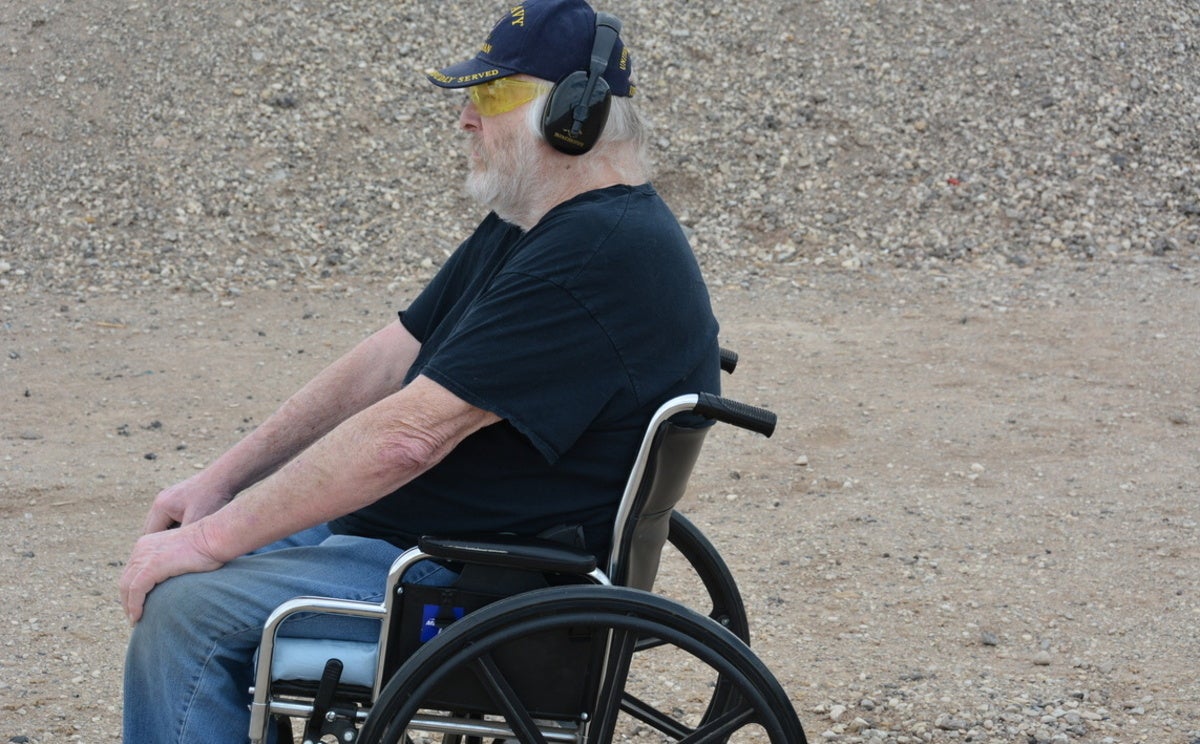
Last summer, a disturbed individual in the community developed a pattern of expressing anger toward wheelchair users on social media. A couple of live encounters with this character led at least two of my wheelchair-using friends to give extra thought to everyday carry (EDC) and training.
One of those people is also a longtime friend, but is relatively new to EDC. Along with his loving wife, this man tried numerous on-body methods, but found none of them tolerable. Together, they researched, experimented, and eventually devised a system that is comfortable for him using his preferred wheelchair. It also offers rapid access to the gun. While there are few perfect carry methods for a wheelchair and this one is not free of flaws, it’s working well for him. I think it’s an idea worth sharing and with this couple’s willingness to share their ideas and photos, I’m now able to share it with you.
The chair used by this gent is non-electric with metal walls as sideboards. His bride had the idea of using a kydex inside-waistband (IWB) holster using a sidewall as a substitute for a waistband. They ordered a Crossbreed holster that features a model-specific Kydex holster with sturdy leather backing on what would normally be the skin-facing side for IWB carry.
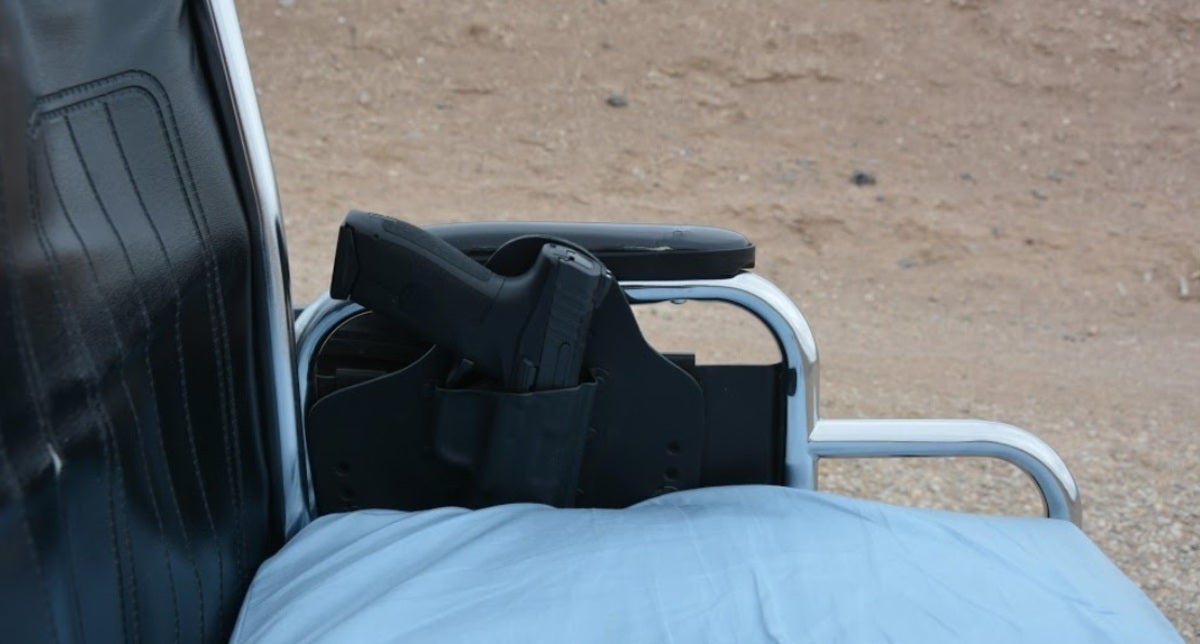
Crossbreed, of Missouri, makes a left-handed holster which was necessary in this case. With the holster in hand and some keen experimentation, they decided to swap the belt clips so that the soft side faces outward. The clips were secured to the sideboards. The Kydex is next to my friend’s leg as he sits in the chair. Drawing from this setup is akin to a strong side OWB draw.
Viewing the holster/chair combo for the first time, I didn’t think it would work. I doubted the clips would be tight enough to keep the holster in place during the draw. Thankfully, I was wrong. As the attached pictures show, my pal now has at least a somewhat concealed gun and the ability to perform a safe and natural drawstroke from his sitting position.
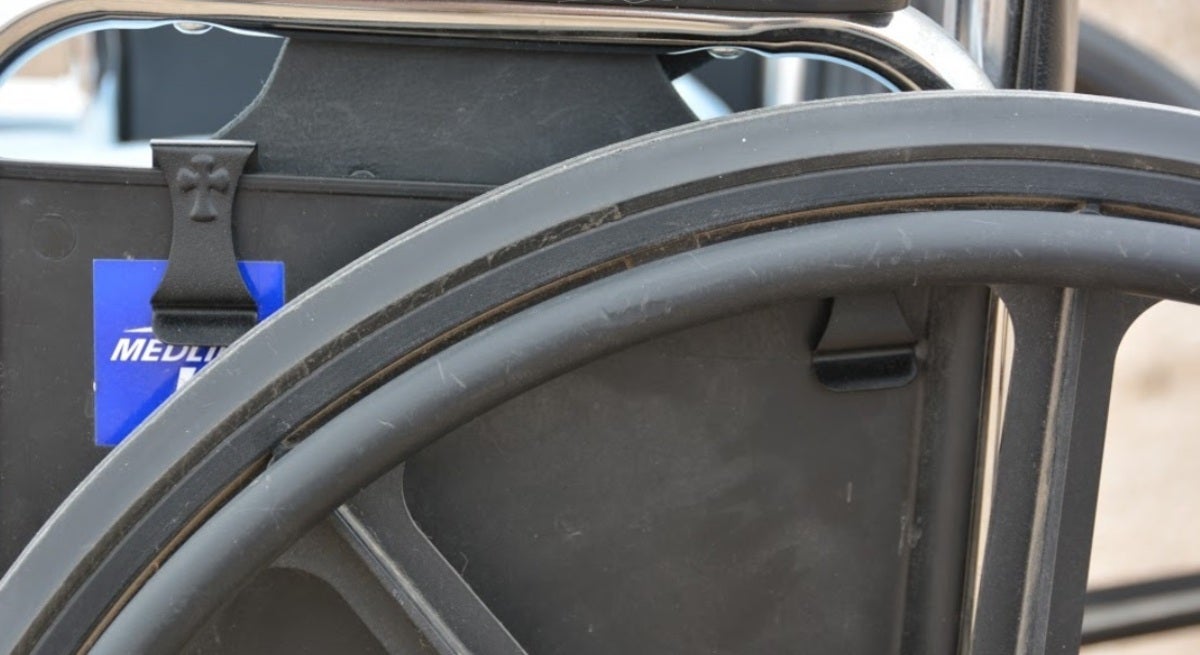
With a roomy over-shirt or some other baggy garment, the gun can be quite well concealed from the front. From the left side, though, the rear of the slide is visible. With a black gun on a black chair, it’s not immediately recognizable, and to a less educated eye, will often go unnoticed.
Reinserting the gun into the holster is not so easy as drawing it for this gun owner. With practice, it will come. For now, assistance is required for safe re-holstering if he stays in the chair, as he has a very limited view of the holster and has yet to develop a feel for its location, one that doesn’t require “sniffing around” with the muzzle, trying to find the holster opening. This skill will come with practice.
Regardless of whether one uses a wheelchair, holster safety is important. The holster in this article meets the two major demands for safe concealment: it covers the trigger guard in such a way that nothing can get in it, and it keeps the gun from falling out or off of the chair in normal daily use.
Consideration should be given in any carry system for where the muzzle points during both the draw and re-holstering motions. Care must be taken not to “flag” anything the carrier does not wish to destroy including his/her own body parts. It is quite common to see unconscious muzzle violations during the act of re-holstering including by people who don’t use wheelchairs.
There can be moments or situations in which violation of the safe muzzle rule is unavoidable. For those times, keeping fingers clear of the trigger guard is a saving grace. Good instruction can remedy many issues with the drawstroke and act of re-holstering, which is where most “accidents” happen.
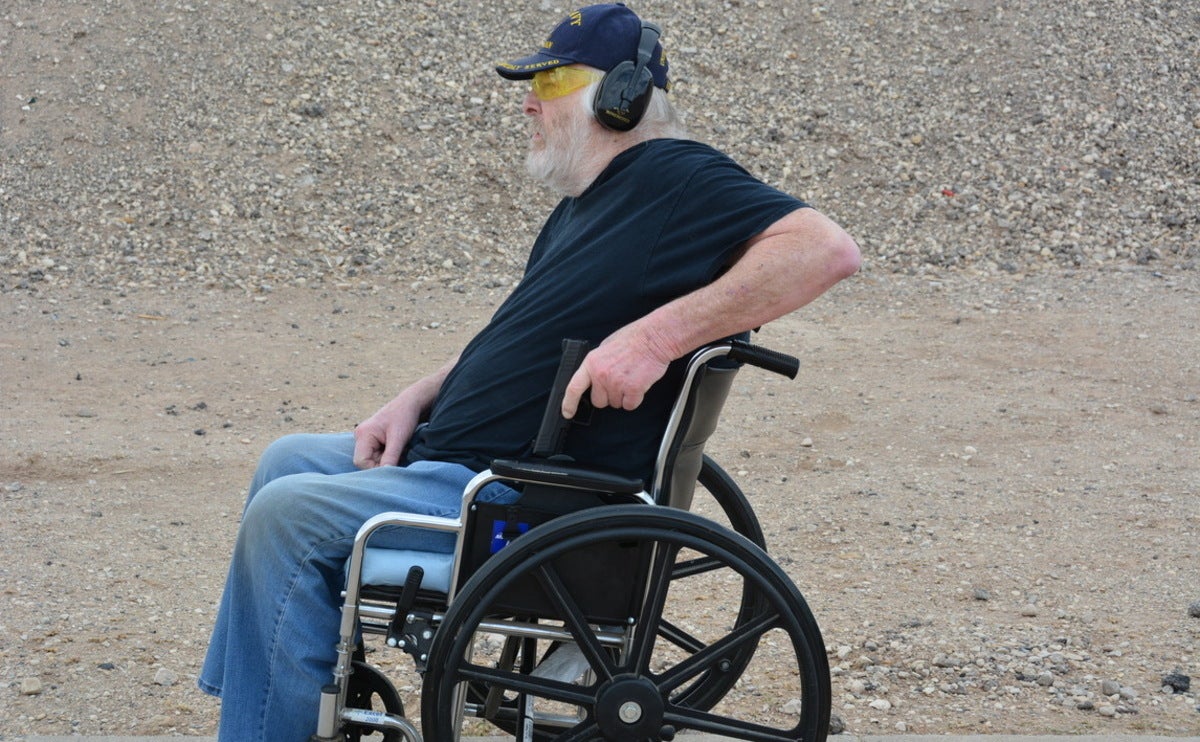
I hope this article has given wheelchair-using readers and their loved ones cause to consider safe carry methods with a wheelchair and maybe some ideas for those who don’t use a chair. There are so many variations on the theme of wheelchairs that it’s hard to think of developing a brand new system set to ride on a wheelchair. If you or someone you know struggles to find a comfortable carry method, keep trying until you find a useful system. If you’re not a wheelchair user, enjoy the many methods and products out there for concealment. Let’s keep the “every” in everyday carry!
Thanks to Desert Photos for the images here.
Notes: This writer and the user are aware that the gun is not completely concealed as shown. Its owner is working on the use of a cover garment. So long as its owner is in a wheelchair, a personally owned “conveyance” under the law in his state, concealment is not legally required in most places.